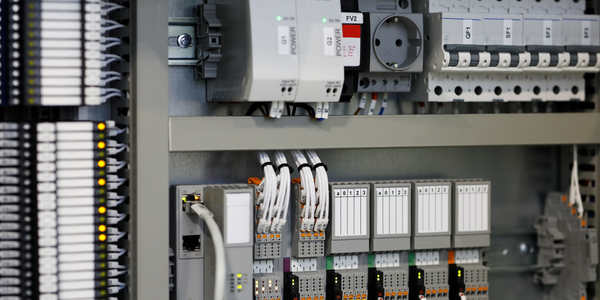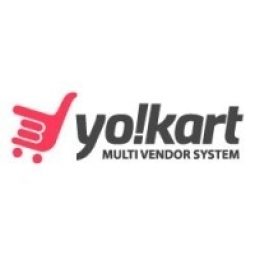Technology Category
- Functional Applications - Enterprise Resource Planning Systems (ERP)
- Platform as a Service (PaaS) - Application Development Platforms
Applicable Industries
- Glass
- Retail
Applicable Functions
- Procurement
- Sales & Marketing
Use Cases
- Inventory Management
- Real-Time Location System (RTLS)
Services
- System Integration
About The Customer
The customer is a world-leading brewing company seeking to revolutionize the fragmented liquor distribution market in Africa. They aimed to provide fair prices to end customers, including mom & pop stores, taverns, and small beer cafes, by breaking the monopoly of big operators. The customer wanted to develop a B2B liquor selling platform that would integrate various features and systems to ensure price transparency and fair trading practices. They engaged FATbit Technologies to develop this platform, with the goal of improving their market share and reach, and enhancing customer satisfaction.
The Challenge
The client, a leading brewing company, was grappling with the challenge of price transparency in the fragmented liquor distribution market in Africa. The lack of transparent prices led to price discrimination and dissatisfaction among end customers, including mom & pop stores, taverns, and small beer cafes. The market dynamics were such that small businesses had weak responsiveness, leading to a lower market share and reach. The liquor monopoly was concentrated in the hands of a few big operators, limiting price choices for small businesses. The client sought to develop a B2B liquor selling platform to provide fair prices to end customers and break the monopoly of big operators.
The Solution
FATbit Technologies developed a B2B liquor selling platform for the client, integrating various features and systems to ensure price transparency and fair trading practices. The solution included Seller ERP integration via Dell Boomi and IBM API Connect, real-time price comparison, basket price comparison, advanced reporting via Microsoft Power BI, loyalty program platform integration, Point Of Sales (POS) system integration, returnables management, advanced level discounts, promotions, real-time inventory management from Seller ERPs, bulk upload of catalogue and inventories, and automatic surveys. The team started by understanding the core steps of the buyers and sellers in the existing offline setup. They then launched a Minimum Viable Product (MVP), refining it over several sprints based on feedback received. The MVP was then evolved into a full-scale product, integrating different ERP systems using Dell Boomi and IBM API Connect. The team also integrated Microsoft Power BI for rich reporting and automated deployment with Octopus Deploy.
Operational Impact
Quantitative Benefit

Case Study missing?
Start adding your own!
Register with your work email and create a new case study profile for your business.
Related Case Studies.

Case Study
Improving Production Line Efficiency with Ethernet Micro RTU Controller
Moxa was asked to provide a connectivity solution for one of the world's leading cosmetics companies. This multinational corporation, with retail presence in 130 countries, 23 global braches, and over 66,000 employees, sought to improve the efficiency of their production process by migrating from manual monitoring to an automatic productivity monitoring system. The production line was being monitored by ABB Real-TPI, a factory information system that offers data collection and analysis to improve plant efficiency. Due to software limitations, the customer needed an OPC server and a corresponding I/O solution to collect data from additional sensor devices for the Real-TPI system. The goal is to enable the factory information system to more thoroughly collect data from every corner of the production line. This will improve its ability to measure Overall Equipment Effectiveness (OEE) and translate into increased production efficiencies. System Requirements • Instant status updates while still consuming minimal bandwidth to relieve strain on limited factory networks • Interoperable with ABB Real-TPI • Small form factor appropriate for deployment where space is scarce • Remote software management and configuration to simplify operations

Case Study
Digital Retail Security Solutions
Sennco wanted to help its retail customers increase sales and profits by developing an innovative alarm system as opposed to conventional connected alarms that are permanently tethered to display products. These traditional security systems were cumbersome and intrusive to the customer shopping experience. Additionally, they provided no useful data or analytics.

Case Study
How Sirqul’s IoT Platform is Crafting Carrefour’s New In-Store Experiences
Carrefour Taiwan’s goal is to be completely digital by end of 2018. Out-dated manual methods for analysis and assumptions limited Carrefour’s ability to change the customer experience and were void of real-time decision-making capabilities. Rather than relying solely on sales data, assumptions, and disparate systems, Carrefour Taiwan’s CEO led an initiative to find a connected IoT solution that could give the team the ability to make real-time changes and more informed decisions. Prior to implementing, Carrefour struggled to address their conversion rates and did not have the proper insights into the customer decision-making process nor how to make an immediate impact without losing customer confidence.

Case Study
Ensures Cold Milk in Your Supermarket
As of 2014, AK-Centralen has over 1,500 Danish supermarkets equipped, and utilizes 16 operators, and is open 24 hours a day, 365 days a year. AK-Centralen needed the ability to monitor the cooling alarms from around the country, 24 hours a day, 365 days a year. Each and every time the door to a milk cooler or a freezer does not close properly, an alarm goes off on a computer screen in a control building in southwestern Odense. This type of alarm will go off approximately 140,000 times per year, equating to roughly 400 alarms in a 24-hour period. Should an alarm go off, then there is only a limited amount of time to act before dairy products or frozen pizza must be disposed of, and this type of waste can quickly start to cost a supermarket a great deal of money.

Case Study
Supermarket Energy Savings
The client had previously deployed a one-meter-per-store monitoring program. Given the manner in which energy consumption changes with external temperature, hour of the day, day of week and month of year, a single meter solution lacked the ability to detect the difference between a true problem and a changing store environment. Most importantly, a single meter solution could never identify root cause of energy consumption changes. This approach never reduced the number of truck-rolls or man-hours required to find and resolve issues.








